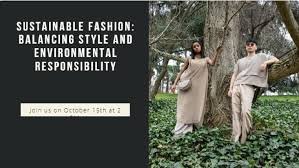Fashion is more than just clothing-it is a statement of personal style and values. But with fast fashion creating waste and harming the environment, choosing sustainable options has never been more important. Finding the right balance between style and ethics can seem challenging, but it does not have to be.
By making thoughtful choices, it is possible to look great while supporting ethical brands, reducing waste, and making a positive impact. Want to know how to build a wardrobe that is both stylish and sustainable? Keep reading to discover simple ways to make fashion a force for good.
Choosing Quality Over Quantity
Trendy clothes come and go, but well-made pieces last for years. Many cheap, fast-fashion items fall apart quickly, leading to more waste. Choosing high-quality fabrics and well-made clothing helps reduce the need to buy new items often.
A few timeless pieces can be styled in different ways, making a wardrobe more versatile without harming the environment. Some brands, like Essentials FOG, focus on quality and durability, offering stylish pieces that last.
Supporting Ethical Brands
Some brands put effort into making fashion better for both people and the planet. They use fair wages, safe working conditions, and eco-friendly materials.
Shopping from these brands means supporting companies that care about workers and nature. Many ethical brands share how they make their products, so customers can feel good about what they buy.
Wearing Natural and Recycled Materials
Synthetic fabrics like polyester and nylon come from plastic and take years to break down. Natural fibers like organic cotton, linen, and hemp are better choices because they are biodegradable.
Recycled fabrics give old materials a new life, reducing waste and pollution. Choosing clothes made from sustainable fabrics helps lessen the impact of fashion on the environment.
Buying Secondhand and Vintage
New clothes are not always necessary. Thrift stores, vintage shops, and online resale platforms offer stylish, unique finds without adding to the waste.
Secondhand fashion keeps clothes out of landfills and reduces the need for new production. Vintage pieces also bring a special charm that cannot be found in mass-produced clothing.
Caring for Clothes Properly
Washing and storing clothes the right way can make them last much longer. Gentle washing, air drying, and proper folding or hanging help keep fabrics in good shape.
Using mild detergents and washing in cold water also saves energy and prevents fabric damage. Simple care habits can keep favorite clothes looking new for years.
Repairing and Repurposing
Small tears, missing buttons, and loose threads do not mean the end of a clothing item. Learning basic sewing skills or taking items to a tailor can extend their life.
Some creative people even turn old clothes into something new, like turning a dress into a skirt or a shirt into a tote bag. This reduces waste while adding a personal touch to fashion.
Making Thoughtful Shopping Choices
Before buying something new, it helps to ask if it is truly needed. Impulse shopping often leads to items that are rarely worn. Thinking about how a piece fits into a wardrobe and how often it will be worn encourages mindful shopping. Buying fewer, better-quality items means saving money and helping the environment.
Fashion That Looks Good in Style and Ethics
Dressing well does not mean harming the planet. Choosing sustainable options makes it possible to enjoy fashion while being responsible. With thoughtful decisions, it is easy to balance style and ethics, making fashion a force for good.
For more on this content, visit the rest of our blog!











